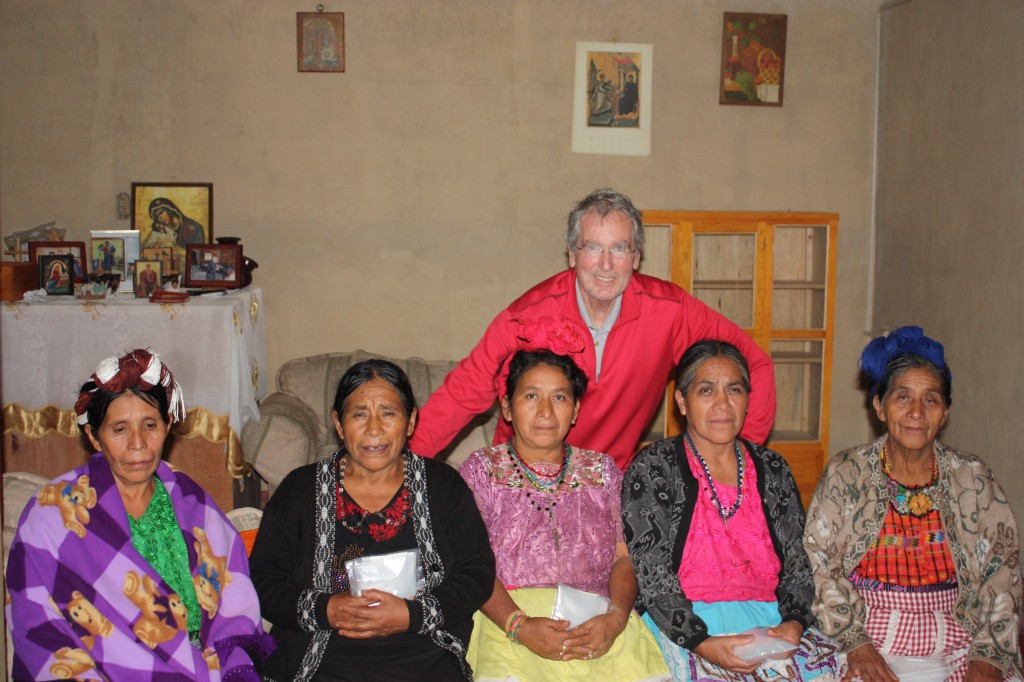THE MIDWIVES OF AGUACATE : BIRTHING A VILLAGE

The midwives and community health worker discuss their needs and challenges
The Mayan Orthodox Church – December 2014
As we approach the glorious celebration of our Lord’s Nativity in the cave of Bethlehem, the thought occurred to me that there might have been a midwife present to assist with the delivery of Jesus. Although the Holy Scriptures remain silent about this, the Orthodox Church’s iconographic depiction of His birth does not. Shown on the bottom left of the famous Nativity icon are the midwives bathing Jesus, thus theologically interpreting for us His true and full humanity. Transposing such an ancient scene of birth onto the canvass of our modern day technological world may require a stretch of the imagination for most of us. Today’s hospitals offer every convenience and comfort when the time comes for a mother to deliver her child. However, such is not the case in many parts of the world, such as the village of Aguacate, where we are building our church clinic. Giving light to a child (dar luz, in Spanish) has more in common with the birth of Jesus than with our world of heart monitors, incubators, sterile rooms, latex gloves, and epidural injections to ease the pain of labor. Instead, babies are born in humble wooden shacks, with plain floors of dirt or cement, upon which the family chickens, dogs or cats move about freely, not unlike the stable in which baby Jesus was born. This now brings me to the important role that the midwives or madronas play in village life. Through their hands, passes the entire life of the village. In Aguacate there are seven of these sturdy women, wizened by age, but not lacking in vitality. Every month, without pay, they help to birth an average of 30 or more children.
In addition to the traditional methods of birthing handed down to them from previous generations, we hope to improve the quality of care they offer, especially in cases of complicated pregnancies. Towards this end, Global Links, a Pittsburgh-based medical relief organization, dedicated to improving health in resource-poor communities, has offered to send surplus medical supplies, along with personnel, to equip and train the midwives. For our recent visit, Global Links provided the One World, One Community Foundation with samples of birthing kits. Project director, Robert Kirschner, demonstrated how these kits can be of help to the midwives. The kit contains rubber gloves, soap, a plastic sheet, 4 x 4 gauze pads, and two sterile umbilical cord clamps. The 6 assembled midwives were very excited to receive the kits. They had never seen umbilical cord clamps before, having used only string to tie off the umbilical cord. A fresh kit will be used for each birth. Rubber gloves will not be reused as before, and the plastic sheets will provide a clean surface on which the mother can deliver her baby. Global links has agreed to provide 100 birthing kits to the village midwives, which we will deliver on our next trip, tentatively scheduled for January 2015. This year when we shout out Christ is born, glorify Him, we will hold in special remembrance the seven midwives of Aguacate, who are birthing an entire village. God grant them, and the children they help to deliver, many years!

